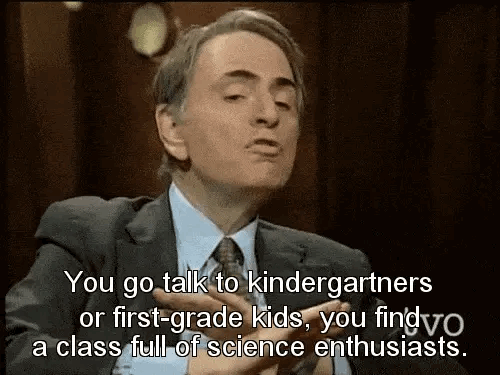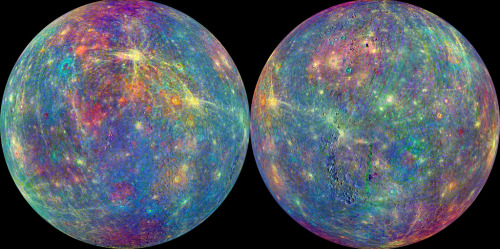tres-4b-blog
astronomy mixed with nostalgia and future
218 posts
Latest Posts by tres-4b-blog

Nikola Tesla once paid an overdue hotel bill with a ‘working model’ of his ‘death beam’. He warned the staff never to open it, describing it as a war-ending particle weapon that could stop invading armies and make warfare pointless.
After his death in 1943, someone finally pried the box open and found nothing but a bunch of harmless old electrical components.
(Source, Source 2)






Astronaut John Young breakdancing falling on the moon during the Apollo 16 mission, 1972

Each second, 1.5 million tons of solar material shoot off the Sun into space. The magnetosphere shields Earth, but the solar wind can get in near the poles and disrupt satellite, radio & GPS signals
![A Telephoto View Of The Orion Nebula And Surrounding Region Over A Saskatchewan Tree [OC]](https://64.media.tumblr.com/ca125d299c81eb090d31514dcdd51473/fe802700e6f484f8-96/s500x750/79a6c886b1b5a31e68e4295426ad972efd4299b4.jpg)
A telephoto view of the Orion nebula and surrounding region over a Saskatchewan tree [OC]
![Blue Dust Galaxy I Was Rendering Galaxy And Wanted To Share With Others Here, [OC] (galaxy Number CFR0001000),](https://64.media.tumblr.com/775463fb17527bc26675212a75e93d16/dd06e625a823bc61-f7/s500x750/c362a6b860eebd8daf41bd7ffb338a476dfbb038.png)
Blue Dust Galaxy I was rendering galaxy and wanted to share with others here, [OC] (galaxy number CFR0001000), 2019




Science never stops on the Space Station
The past two weeks in Earth orbit saw ESA astronaut Luca Parmitano and NASA astronaut Andrew Morgan conduct two of four planned spacewalks to service the Alpha Magnetic Spectrometer AMS-02.
Spacewalks are time-consuming to prepare, and can occupy many hours of an astronaut’s week in space.
Despite this, much of the science on the International Space Station continues unattended, controlled by operators on Earth.
Planners also find creative ways to fit experiment runs into a crewmember’s busy schedule.
Let us take look at some of the European research running at 28 800 km/h above Earth.
Many experiments, once they are set up, can run in the background while astronauts do other work.
Three experiments like this were initialised and fine-tuned over the past two weeks.
On 18 November, Roscosmos astronaut Alexander Skvortsov changed the camera mode for the Electromagnetic Levitator that recorded the melting and solidifying of metal alloys over the following nights, including one made of copper and zinc – both in vacuum and in helium gas.
The levitator allows researchers to inspect how metals form in controlled circumstances – without gravity skewing results.
The findings will help us understand how to make metals with interesting and useful properties for application in electronics and manufacturing.
The Multiscale Boiling experiment also ran for three days after fine-tuning that started on 11 November.
The experiment added an electrical field to boiling bubbles in space to recreate aspects of gravity.
At night, the experiment was turned off and data downloaded to ground control for researchers eager to understand more about how bubble formation can influence the way heat is transferred.
This study will help improve thermal management systems in space.
Other experiments in progress included radiation monitoring experiment Dosis-3D, and the Matiss-2 experiment that will collect dust and bacteria over six months to assess materials for cleaner spacecraft.
Alexander also prepared the PK-4 science campaign by clearing its tubes of air and then filling them with neon gas.
On 11 November gas was ignited into a plasma by applying a high voltage.
Micro-particles went for a ride in the plasma-tubes and became charged – behaving like atoms.
Lasers and cameras measure how the dust particles move and the data is recorded to hard drives to better understand how atoms interact on a molecular level.
The Russian-European experiment requires astronauts to “catch” the clouds of particles (using electromagnetic fields) when these come into view in the PK-4 chamber.
Crewmembers also need to swap the gas and hard drives for the experiments run remotely from ground.
Some experiments require astronauts to be the test subjects.
On 13 November Luca started his fifth session of the NutrISS experiment by measuring his body composition and reporting on his diet through the Everywear app.
This experiment will help scientists understand and respond to the changing nutritional requirements of humans in space.
Luca also found time during the past two weeks to take an Earth-based rover for a spin.
Called Analog-1, the experiment uses the Space Station as a stand-in for spacecraft orbiting another planet.
From orbit, Luca controlled a robot in the Netherlands, driving this around a geological site and collecting rocks as directed by a science team at ESA’s astronaut centre in Cologne, Germany.
Loading the software and setting up the experiment on the Station computers was done while Luca was outside the Space Station for the first spacewalk of his Beyond mission.
TOP IMAGE….ESA astronaut Luca Parmitano and NASA astronaut Andrew Morgan are helped into their American EMU spacesuits by NASA astronaut Christina Koch and Russian cosmonaut Oleg Skripochka ahead of the second spacewalk to service AMS-02. The Alpha Magnetic Spectrometer AMS-02 is a cosmic ray detector that is helping scientists understand more about the origins of our Universe. To continue delivering groundbreaking science, its cooling system must be upgraded. However, it was never designed to be maintained in orbit making the spacewalking series particularly complex. ESA/NASA
CENTRE IMAGE….The Electromagnetic Levitator (EML) in the Columbus module of the International Space Station. The EML multi-user facility is designed for containerless materials processing in space. This photo was taken by ESA astronaut Alexander Gerst during his Blue Dot mission in 2014. ESA/NASA
LOWER IMAGE….We know our world is made of atoms and molecules, but even with the most powerful microscope we cannot see them moving, meaning our understanding of how molecules interact is based on experimentation and assumptions. The ESA–Roscosmos Plasma Kristall-4 experiment is recreating atomic interactions on a larger scale. A plasma is an electrically charged (‘ionised’) gas. It is considered to be the fourth state of matter, distinct from gas, liquid and solid matter. The image shows the parabolic flight setup of PK-4 used as a test model for the International Space Station. The plasma (orange glow) is created in a U-shaped glass tube with an electric field. The microparticles trapped in the chamber are illuminated by a green laser light allowing the observation of the motion of the particles. Plasma Kristall-4 will inject microscopic dust particles into a neon and argon tube to act as atom substitutes. As they float in the charged gas, they will collect negative charges as positive ions accumulate around them. As a result, they will start to repulse each other – just like atoms do in a fluid state. Doing this research on Earth is not possible – the dust particles would fall with gravity and the simulated atoms would not behave realistically. This experiment is making the atomic scale visible for analysis and will help scientists to understand the interactions of atoms. Michael Kretschmer

A 5.5 hour time lapse I made of Mercury transiting the Sun the other week, shot from my apartment roof [OC]

Bill Gates once released a jar full of mosquitos into the audience during a TED talk on malaria, stating “There’s no reason only poor people should have the experience.”










Not Only Didn’t We Find Water On An Earth-Like Exoplanet, But We Can’t With Current Technology
“Over the past few decades, astronomers have uncovered thousands of new exoplanets. Some of them are rocky; some are temperate; some have water. However, the idea that exoplanet K2-18b is rocky, Earth-like, and has liquid water is absurd, despite recent headlines. Light filters through K2-18b’s atmosphere when it passes in front of its star, enabling us to measure what’s absorbed. Based on those absorption lines, the presence of many chemicals can be inferred, including water. K2-18b is, truly, the first known habitable-zone exoplanet to contain water. However, it is not rocky; its mass and radius are too large, necessitating a large gas envelope around it.”
How incredible was that report that came out last week: the first Earth-like, rocky exoplanet with liquid water on its surface has been discovered! If it were true, it would be incredible. Well, what we did find is still pretty remarkable, but it’s very different from what you’ve likely heard.
We did find water on the exoplanet in question, K2-18b, but only in the vapor phase and only in the atmosphere.
The exoplanet is closer to Earth in terms of mass and radius than any other with water on it, but the planet is still too massive and large to be rocky. It must have an envelope of hydrogen and helium, and both have had their presence detected.
If we want to find atmospheric biosignatures around Earth-like worlds, we need better observatories. Let’s build them! Here’s the real story.
List of extrasolar candidates for liquid water
The following list contains candidates from the list of confirmed objects that meet the following criteria:
Confirmed object orbiting within a circumstellar habitable zone of Earth mass or greater (because smaller objects may not have the gravitational means to retain water) but not a star
Has been studied for more than a year
Confirmed surface with strong evidence for it being either solid or liquid
Water vapour detected in its atmosphere
Gravitational, radio or differentation models that predict a wet stratum
55 Cancri f

With a mass half that of Saturn, 55 Cancri f is likely to be a gas giant with no solid surface. It orbits in the so-called “habitable zone,” which means that liquid water could exist on the surface of a possible moon. ]
Proxima Centauri b

Proxima Centauri b is an exoplanet orbiting in the habitable zone of the red dwarfstar Proxima Centauri, which is the closest star to the Sun and part of a triple star system. It is located about 4.2 light-years from Earth in the constellation of Centaurus, making it the closest known exoplanet to the Solar System.
Gliese 581c

Gliese 581c gained interest from astronomers because it was reported to be the first potentially Earth-like planet in the habitable zone of its star, with a temperature right for liquid water on its surface, and by extension, potentially capable of supporting extremophile forms of Earth-like life.
Gliese 667 Cc

Gliese 667 Cc is an exoplanet orbiting within the habitable zone of the red dwarf star Gliese 667 C, which is a member of the Gliese 667 triple star system, approximately 23.62 light-years away in the constellation of Scorpius.
Gliese 1214 b

Gliese 1214 b is an exoplanet that orbits the star Gliese 1214, and was discovered in December 2009. Its parent star is 48 light-years from the Sun, in the constellation Ophiuchus. As of 2017, GJ 1214 b is the most likely known candidate for being an ocean planet. For that reason, scientists have nicknamed the planet “the waterworld”.
HD 85512 b

HD 85512 b is an exoplanet orbiting HD 85512, a K-type main-sequence star approximately 36 light-years from Earth in the constellation of Vela.
Due to its mass of at least 3.6 times the mass of Earth, HD 85512 b is classified as a rocky Earth-size exoplanet (<5M⊕) and is one of the smallest exoplanets discovered to be just outside the inner edge of the habitable zone.
MOA-2007-BLG-192Lb

MOA-2007-BLG-192Lb, occasionally shortened to MOA-192 b, is an extrasolar planet approximately 3,000 light-years away in the constellation of Sagittarius. The planet was discovered orbiting the brown dwarf or low-mass star MOA-2007-BLG-192L. At a mass of approximately 3.3 times Earth, it is one of the lowest-mass extrasolar planets at the time of discovery. It was found when it caused a gravitational microlensing event on May 24, 2007, which was detected as part of the MOA-II microlensing survey at the Mount John University Observatory in New Zealand.
Kepler-22b

Kepler-22b, also known by its Kepler object of interest designation KOI-087.01, is an extrasolar planet orbiting within the habitable zone of the Sun-like star Kepler-22. It is located about 587 light-years (180 pc) from Earth in the constellation of Cygnus. source
Nikola Tesla - The True Discoverer of the Rotating Magnetic Field


"Many erroneous statements have appeared in print relative to my discovery of the rotating magnetic field and invention of the induction motor which I was compelled to pass in silence. Great interests have waged a long and bitter contest for my patent rights; commercial animosities and professional jealousies were aroused, and I was made to suffer in more than one way. But despite of all pressure and efforts of ingenious lawyers and experts, the rulings of the courts were in support of my claims for priority in every instance without exception. The battles have been fought and forgotten, the thirty or forty patents granted to me on the alternating system have expired, I have been released of burdensome obligations and am free to speak...
"...A few words should be said in regard to the various claims for anticipation which were made upon the issuance of my patents in 1888, and in numerous suits conducted subsequently. There were three contestants for the honor, Ferraris, Schallenberger and Cabanellas. All three succumbed to grief. The opponents of my patents advanced the Ferraris claim very strongly, but any one who will peruse his little Italian pamphlet, which appeared in the spring of 1888, and compare it with the patent record filed by me seven months before, and with my paper before the American Institute of Electrical Engineers, will have no difficulty in reaching a conclusion. Irrespective of being behind me in time, Prof. Ferraris's publication concerned only my split-phase motor, and in an application for a patent by him priority was awarded to me. He never suggested any of the essential practical features which constitute my system, and in regard to the split-phase motor he was very decided in his opinion that it was of no value. Both Ferraris and Schallenberger discovered the rotation accidentally while working with a Gullard and Gibbs transformer, and had difficulty in explaining the actions. Neither of them produced a rotating field motor like mine, nor were their theories the same as my own. As to Cabanellas, the only reason for his claim is an abandoned and defective technical document. Some over-zealous friends have interpreted a United States patent granted to Bradley as a contemporary record, but there is no foundation whatever for such a claim. The original application only described a generator with two circuits which were provided for the sole purpose of increasing the output. There was not much novelty in the idea, since a number of such machines existed at that time. To say that these machines were anticipations of my rotary transformer is wholly unjustified. They might have served as one of the elements in my system of transformation, but were nothing more than dynamos with two circuits constructed with other ends in view and in utter ignorance of the new and wonderful phenomena revealed through my discovery."
–Nikola Tesla
“Some Personal Recollections.” Scientific American, June 5, 1915.

Astronaut Scott Kelly Playing Ping-Pong in Space with Water and Hydrophobic Paddles.
Via NASA Johnson























